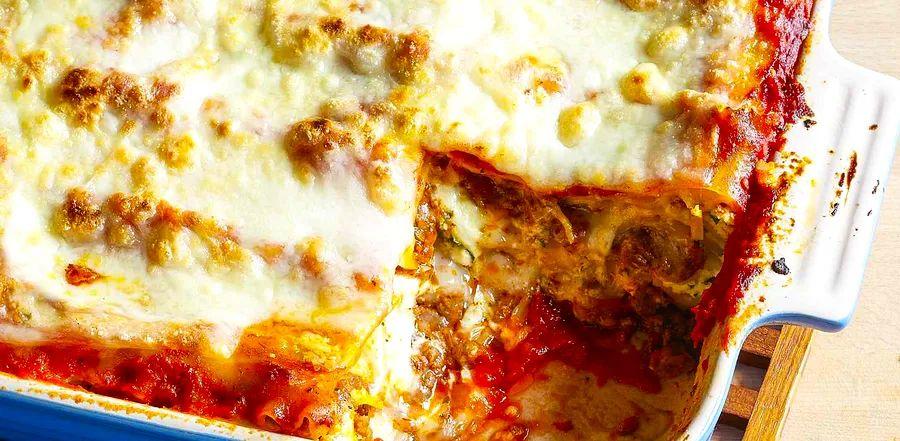The Ultimate Guide to Layering Lasagna, According to an Italian Chef

In an ideal world, a steaming plate of homemade lasagna would be the definition of 'comfort food.' This savory masterpiece brings together the best textures and flavors—melted cheese, rich tomato sauce, and hearty ground meat—creating a dinner that’s even more delicious the next day. The classic combination of pasta, sauce, and cheese is simple yet endlessly adaptable, whether you swap the cheese, use pesto instead of tomato sauce, or even turn leftover spaghetti into lasagna noodles.

The Best Way to Layer Lasagna
“I prefer my lasagna with a classic meat Bolognese sauce, a rich béchamel, whole milk mozzarella, and Pecorino Romano,” says Kevin Maxey, chef and owner of Pendolino in Sandy Springs, Georgia. If you like your lasagna layers clearly defined, follow his technique:
- Start by coating the bottom of the pan with a thin layer of marinara sauce.
- Place a layer of pasta, then top with Bolognese sauce.
- Add another layer of pasta and top with the cheese mixture.
- Add a third layer of pasta and top with Bolognese sauce again.
- Next, add a fourth layer of pasta and top with more cheese mixture.
- Finish with a final layer of pasta, then top with marinara sauce and a generous amount of grated Pecorino Romano.
Maxey's method uses a light touch with tomato sauce, saving it for just the first and last layers, while serving extra marinara on the side. He also prefers to keep the cheese and dairy layers separate from the Bolognese. Of course, this isn’t the only way to make lasagna. If you prefer mixing cheese and sauce together, feel free to combine them in the same layer.

Additional Tips for Layering Lasagna
Regardless of your choice of ingredients, there’s one key rule when it comes to lasagna layering: always start with an even layer of sauce. This creates a moisture barrier between the baking dish and the first layer of noodles, preventing the pasta from sticking and ensuring each slice comes out perfectly without any hassle.
Ben Skolnick, pasta expert and sous chef at BoccaLupo in Atlanta, explains that when assembling lasagna, a few factors should be taken into account. The first is how many layers your lasagna will have: for a multi-layered dish (think 15 layers or more), blanch and dry your pasta sheets beforehand. This way, you won’t need to add extra moisture to the noodles, as they won’t be cooked in the sauce. For fewer layers, it’s best to use dry noodles and add a bit more sauce to provide enough moisture.
“Raw pasta will absorb a certain amount of liquid as it cooks and hydrates,” Skolnick says. “If there’s too much liquid, though, you’ll end up with a soupy mess.” He recommends using a thin bechamel or mornay (cheese bechamel) to help bind any excess liquid in the ragu. Another tip: don’t make your layers thicker than ¼ inch. And if you're using raw noodles, be sure to season generously—there’s nothing worse than a bland lasagna.

1

2

3

4

5
Evaluation :
5/5